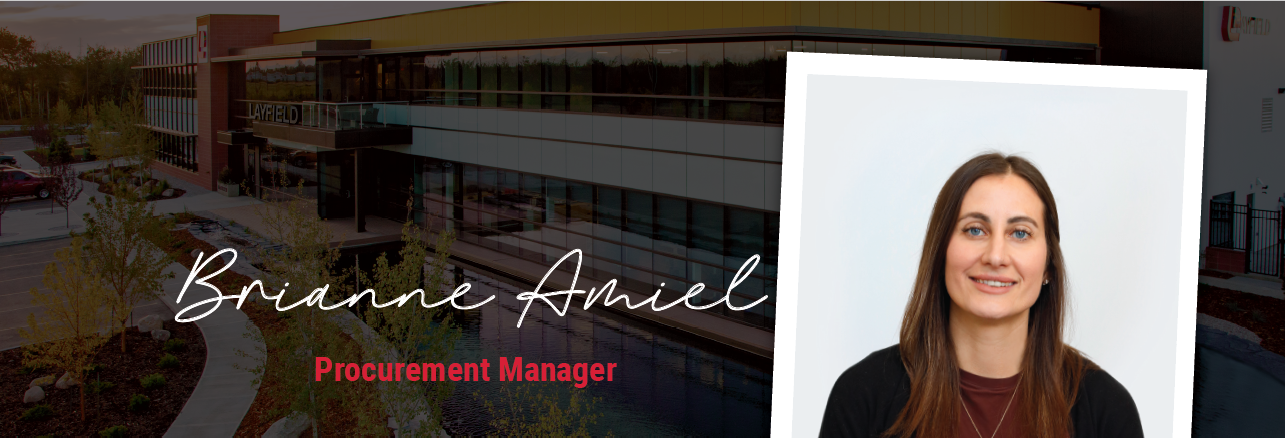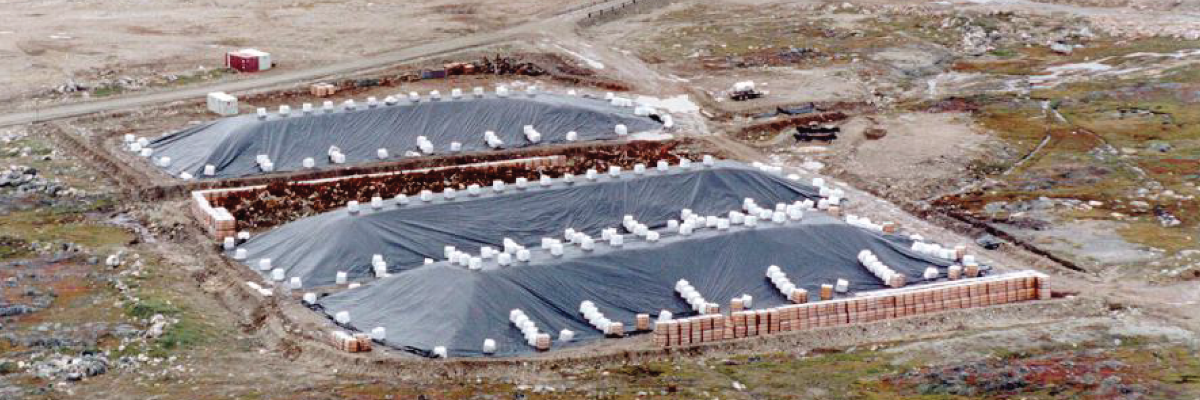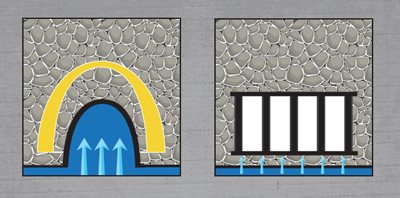Written by Amy Woods | Layfield Geosynthetics
With increasing stormwater volume requirements, many stormwater management systems have had to make changes to meet the challenge. The new guidelines mean stormwater management systems need to be taller to increase capacity, but it also means they are being installed deeper into the ground. Deeper installation leads to a higher likelihood of encountering groundwater. The presence of groundwater holds a distinct set of design requirements for underground storage systems.
Geomembranes Prevent Groundwater Infiltration
A geomembrane must be installed around the tanks to prevent groundwater from entering and displacing storage volume. There are two methods for installing the geomembrane. In the first method, the liner can be placed around the excavation and stone. This allows you to use the storage volume from the stone’s void space (~40%).
Or, when using modular tanks, the liner can be placed around the tank. Placing the liner around the tank allows for easier installation and reduces the likelihood of installation damage. This method also reduces installation time and cost. Geomembrane type should be reviewed during the design process, allowing for the following considerations:
Material – Typically, a low-density product such as Enviro Liner® should be used as it will be more flexible, bend around the stone and contours of the excavation, and bend/fold at corners. High-density liners are too rigid and can be susceptible to stress cracking. If there is the potential for hydrocarbons to enter the system from parking lot runoff, the geomembrane used should be resistant to these chemicals.
Thickness – The thickness of the material should be considered to ensure puncture resistance, especially during installation. Generally, it is recommended to use a 30 mil with an 8oz/yd2 cushion fabric on each side. However, site conditions may require thicker materials to ensure higher puncture resistance.
Welding methods – Most geomembranes require trained installers to operate the welding equipment, which includes wedge and extrusion welders. ASTM test methods are established to ensure proper welding and testing to create watertight seams at liner overlaps and pipe penetrations for inlets, outlets, and observation ports. A taped or glued liner at seams and pipes will not be watertight. This will allow seepage from groundwater to enter the tank and displace storage from stormwater.
Ballast material
The stormwater management system must have sufficient ballast to counteract buoyancy from the submerged tanks. The high elevation of groundwater in relation to the tank height dictates the uplift pressure, allowing us to determine the depth of ballast material required above to tank to counteract buoyancy. The ballast’s depth, location, and soil type are also essential to the equation.
When using a flat bottom system, all backfill material, including the bedding and cover stone above the liner, may be used in calculations. Only the amount of stone immediately under the arch and above the liner can be used when using an open-bottom arch system. Nothing prevents the stone from being displaced from water pressure without rigid support under the arch. A liner on its own will elongate and eventually rupture with prolonged stress. See the below illustration.
Loading
Vertical loading is an important design factor for underground stormwater management systems to withstand live and dead loading. Tall underground systems may require significant ballast to counteract buoyancy, which creates additional loading considerations. Manufacturers of underground tanks should have long-term testing completed to determine the maximum depths for their products. This testing requires a review.
Lateral loading is also significant for underground systems that have deep burials. In addition to earth pressure, groundwater generates additional water pressure exerted on the sides of the tank. The lateral load must be calculated with the native and imported soils in dry and wet conditions to ensure sufficient resistance for long-term performance.
It is recommended that, in all cases, a competent professional engineer is engaged to ensure fitness for the intended application. The above information is a general guideline to ensure these factors are considered in the overall design.
To learn more about Layfield Low Impact Development Methods, click here.
Related Articles
View All News










